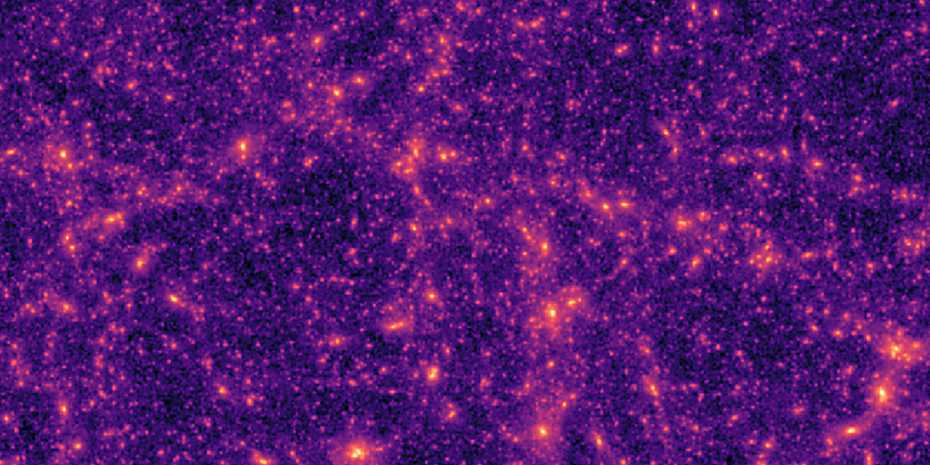You might use ANNs for machine
vision, but did you know it can predict weather, track animal behavior,
and unlock the secrets of cosmology?
In the past, we’ve discussed how artificial neural networks (ANNs) may be the missing link to artificial intelligence. ANNs are being used in well-known applications like machine vision for self-driving cars and medical diagnostic technology, but ANNs can also be used in various other fields of research due to their ability to find patterns, relationships, and associations in sets of data.
The biological neural network in the top image serves as a model for an artificial neural network seen in the bottom image. Image used courtesy of Ying Nian Wu via UCLA.
In recent years, scientists have used the advanced machine learning of ANNs to yield new insights into fields that you may not associate with AI. Here's a look at how ANNs are helping us predict the weather, protect vulnerable bird populations, and understand dark matter in the universe.
Convolutional Neural Networks in Meteorology
Convolutional neural networks (CNNs) take input images and assign importance to different characteristics in the image, which allows a model to differentiate images. One new application of CNNs has appeared in meteorology.Scientists have been able to recognize hailstorms by using programs comparable to facial recognition software. Like a computer can recognize facial features to unlock a phone, scientists have employed similar features to recognize how a hailstorm looks, ultimately serving as an alert for upcoming storms.
Machine learning scientist David John Gagne from the National Center for Atmospheric Research (NCAR) used CNNs to train a deep learning model by showing the model large amounts of storm data. Gagne’s model can effectively identify “whether or not a storm will produce large hail.”
MistNet to Track Bird Migration
Another application of convolution neural networks is the tracking of migratory patterns of millions of birds through radar records. Researchers from the University of Massachusetts Amherst and the Cornell Lab of Ornithology developed a machine learning tool called MistNet, which uses deep CNNs to distinguish rain from birds in radar scans.Because MistNet is fully automated and can be used to interpret large amounts of data from radar scans, it can be useful for applications such as continent-scale mapping and analyzing airspace usage.
U.S. cumulative migration traffic from 1999 to 2018. Image used courtesy of the authors and Kyle G. Horton.
MistNet can reveal changes in climates, habitats, and migration patterns, which in turn helps ecologists identify peak times of movement. Consequently, this data can be used to identify when birds are actively migrating and allow conservationists to publicize methods of making migration paths safer for the flocks.
Both the MistNet model and source code are available on GitHub.
Measuring Dark Matter
Dark matter pulls the universe together; but knowing and measuring how much of it exists can be a challenge since we can’t physically see it. However, all matter (including dark matter) can be detected via gravitational lensing because matter slightly bends the path of light rays that arrive at earth from other galaxies, creating distorted images.Cosmologists then compare the maps of the distorted images to theoretical predictions to find which model matches the data best. This data analysis was previously achieved by correlation functions (a human-made statistical analysis), which describe how different parts of the map are related.
This year, a team of physicists and computer scientists at ETH Zurich are streamlining the mapping process by training neural networks with computer-generated data that simulates the universe. The neural network taught itself to look for specific features of dark matter and learn cosmological parameters, essentially improving its ability to locate dark matter.

A portion of a CG map of dark matter the ETH Zurich researchers used to train their neural network. Image used courtesy of ETH Zurich
When assessing the performance of the neural network, the team at ETH Zurich found that the network’s values were 30% more accurate than when they used statistical analysis.
How are ANNs Changing the Way Engineers Work?
Researchers are pursuing new ways to use ANNs within electrical engineering: in predicting the behavior of electronic circuits, in power systems, and in medical imaging. While ANNs can help solve complex problems more efficiently and produce better performance, not every problem requires it.There are several limitations to neural networks that warrant consideration. ANNs tend to require more data, time, and computational power to train than a traditional machine learning algorithm. When using deep neural networks (DNNs), users may struggle to understand why they receive a certain result—this because of the complexity of models with anywhere from hundreds to thousands of factors.
Although there are many advantages of neural networks—the main being that they can outperform traditional machine learning algorithms and, in many cases, humans—not every problem an engineer encounters will require a neural network. Simple and traditional solutions are still valuable and can save both time and computational power.
While many researchers directly implement ANNs through software, it is also possible to design hardware neural networks (HNNs) without using software. There has been significant progress and interest in hardware neural networks in the past two decades. ANN or HNN, electrical engineers will play a role in their development and application to solve appropriate problems.
Have ANNs impacted your work? Tell us how in the comments below.









No comments:
Post a Comment